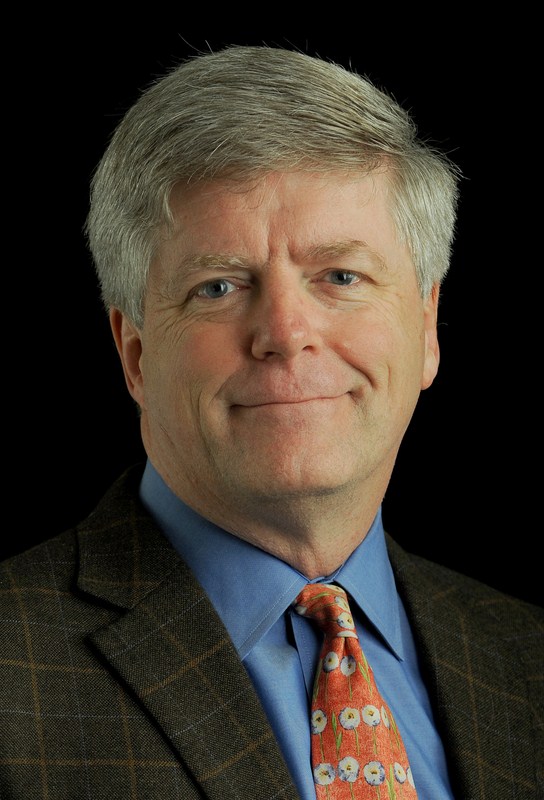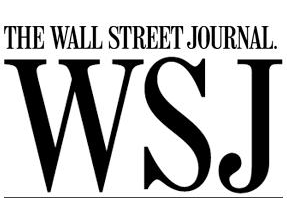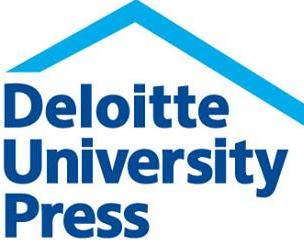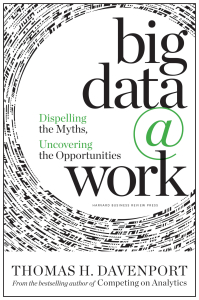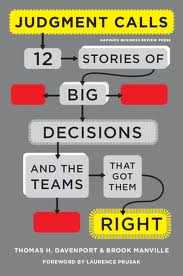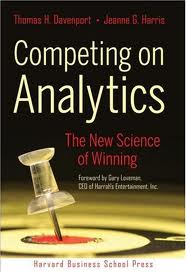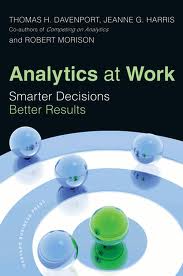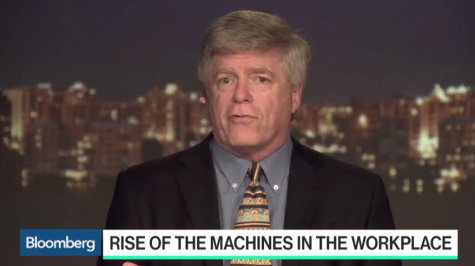praise for Tom Davenport
“Once again pushes the envelope with Big Data and Analytics”
“The smartest business speaker out there!”
“Had the audience on the edge of their seats!”
“Energizing”
“A rock star!”
“I learned more from this speaker in one hour than from any I’ve ever heard.”
“Appropriately provocative.”
Tom Davenport is the President’s Distinguished Professor of Information Technology and Management at Babson College, the co-founder of the International Institute for Analytics, a Fellow of the MIT Center for Digital Business, and a Senior Advisor to Deloitte Analytics. He has taught analytics and big data executive education programs at Babson, Harvard Business School, MIT Sloan School, and Boston University. Celebrated as a visionary thinker, Tom pioneered the concept of “competing on analytics” with his 2006 Harvard Business Review article and his 2007 book by the same name. Since then, he has continued to provide cutting-edge insights on how companies can use analytics and big data to their advantage – topics that he explores in his 2014 book, Big Data@Work (Harvard Business Review Press).
In recent years, Davenport has extended his work on analytics and big data to its logical conclusion–what happens to us humans when smart machines make many important decisions? In their groundbreaking 2015 Harvard Business Review cover article, “Beyond Automation,” Davenport and co-author Julia Kirby, reframe the automation debate, arguing that “augmentation”–people and machines working alongside each other–can help companies become more efficient while improving, rather than replacing, jobs for humans. Davenport and Kirby released a book on this topic, Only Humans Need Apply: Winners and Losers in the Age of Smart Machines, with Harper Business in May 2016.
Davenport has written or edited seventeen books and over 100 articles for Harvard Business Review, Sloan Management Review, the Financial Times, and many other publications. He also writes a column for the Wall Street Journal. He has been named one of the top three business/technology analysts in the world, one of the 100 most influential people in the IT industry, and one of the world’s top fifty business school professors by Fortune magazine.
Davenport travels the world to provoke, stimulate, and equip audiences with the ideas, strategies and best practices proffered in his books. A seminal force in transforming business practices, he engenders change leadership through his ability to make even the most complex and sophisticated concepts accessible and applicable.
Davenport earned a Ph.D. from Harvard University in social science and has taught at the Harvard Business School, the University of Chicago, Dartmouth’s Tuck School of Business, Boston University, the University of Texas at Austin, and Babson College.
Below are Tom’s most popular talks. More talks and descriptions can be found at tomdavenport.com.
Four Eras of Analytics
There have been four different approaches for applying analytics to business over the last half century. Some organizations still practice Analytics 1.0 (the artisanal era), while others are actively pursuing Analytics 4.0 (the cognitive era). Each era requires different management of both analytics and the underlying data. In this presentation Tom Davenport will describe the attributes of each era, the drivers of change, and the valuable lessons that each era provides. He will provide examples of 3.0 and 4.0 organizations (in healthcare and other industries) and the business, technology, and human issues with which they are wrestling.
The Cognitive Corporation
Cognitive technologies (AKA artificial intelligence) offer the possibility of new and potentially disruptive opportunities to many businesses today. A growing number of firms are already achieving significant benefits, and are building ongoing capabilities to develop and use these technologies. In this presentation Tom Davenport will describe the constellation of cognitive technologies and some of the most prominent enterprise use cases for each. He contrasts “moon shot” projects with “low hanging fruit” uses of AI that are much likely to be successful. He’ll also discuss the strategies and steps companies can take to incorporate cognitive capabilities into their businesses. Examples of successful early adopters will make tangible the potential of this important new factor in competitive success.
The Cognitive Company in Financial Services
Cognitive technologies offer the possibility of new and potentially disruptive opportunities to many businesses today, and the financial services industry is among the most aggressive users. A growing number of banking and insurance firms are building ongoing capabilities to develop and use these technologies. In this presentation Tom Davenport will describe the constellation of cognitive technologies and some of the most prominent financial use cases for each. He’ll also discuss the steps financial services firms can take to incorporate cognitive capabilities into their business processes and strategies. Examples of early adopters in the banking and insurance industries will make tangible the potential of this important new factor in competitive success.
Automation or Augmentation of Knowledge Work Jobs?
Many economists have all but ceded many middle and lower-skill jobs to automation, but high-end knowledge workers have always been deemed safe from automation-driven job loss. The rise of analytics and other decision-oriented technologies, however, is beginning to put those roles at risk as well. In this presentation Tom Davenport will describe which types of jobs are most at risk, and over what timeframe potential disruptions in knowledge work might take place. Most importantly, he will argue that there are ways that knowledge workers can make it likely that their work is augmented by technology rather than fully automated by it. Read his Harvard Business Review article, Beyond Automation.
Analytics 3.0: Big Data in Big Companies
The concept of “big data” was originally established in startup and online firms in Silicon Valley, but it is now being widely adopted by large organizations in more traditional industries. In this session, Tom describes the concept of big data and what large firms are attempting to accomplish with it. Big data coexists with previous approaches to data management and analytics in large firms, and Tom describes their integration using the “Analytics 3.0” framework he has developed. This framework portends an entirely new era for how to conduct analytics in organizations, and promises considerable improvements in speed and impact.
Keeping Up with Your Quants
Quantitative analytical thinking is key to successful individual and organizational decision-making. Yet many managers lack the necessary orientation to quantitative matters. In this presentation, Tom adapts the ideas in his book Keeping Up with the Quants to acquaint managers with a straightforward process for quantitative thinking. He describes the steps in the process that are most critical for managers to address, and those they can safely leave to the quants. He also describes the most effective ways for quants and decision-makers to work together, and the expectations each should have. Throughout the session, he presents examples of good and bad quantitative thinking and decision-making.
Big Data vs. Small Data Analytics
Although many companies and observers are excited about the possibility of competitive advantage from analytics on “big data,” they may not understand fully the differences between big and small data analytics. In this session, Tom describes the concept of big data and what organizations are attempting to accomplish with it, and the role of the data scientist in extracting value from big data. He presents examples of several leading companies, from startup to established, that are aggressively pursuing big data. Throughout the session, Tom sheds light on the implications of big data and how it enables organizations to manage and bring products and services to market.
Making Different—and Better—Decisions
In this talk, Tom describes the results from his most recent research study on the new landscape of decision-making. He argues that recent decision failures mean that organizations need to systematically examine their approaches to making key decisions. He defines how organizations improve decisions through:
- different opinions and dissent in the decision process
- different alternatives, such as the wisdom of crowds
- findings from neuroscience and behavioral economics
- different blends of analytics and intuition
- different relationships between analysts and decision-makers.
He draws upon interviews with more than fifty companies about how they have actually improved particular decision processes.
Making Better Decisions in Financial Services: More Analytics and More Intuition
The global financial services industry has endured an unprecedented period of poor decision-making that has threatened its very survival. In the new economic and regulatory environment, financial institutions need to ensure that they make decisions with high value and low risk. In this presentation, Tom describes an approach to decision-making that maximizes both the power of analytics as well as the ability of human intuition to know that the game has changed.
Analytics at Work: Smarter Decisions, Better Results
Any organization and manager can benefit from systematic examination of decision-making and analytics provides a powerful tool. This session addresses how any organization can improve its analytical capabilities to enable better decision making processes. Tom demonstrates how some of the world’s leading companies use analytics to make better decisions as well as build competitive advantage. He presents a process for systematically improving decisions and translating them into action and better business results.
Participants will also be able to address particular issues and topics that relate to their own organizations.
Competing on Analytics: How Fact-Based Decisions and Business Intelligence Drive Performance
Companies have long used business intelligence for specific applications, but these initiatives were too narrow to affect corporate performance. Now, leading firms are basing their competitive strategies on the sophisticated analysis of business data. Instead of a single application, they are building broad capabilities for enterprise-level business analytics and intelligence. These strategies are driven by senior executives who insist on fact-based decisions. In this talk, Tom describes his recent research on firms that compete on the basis of their analytical prowess and provides guidelines for adopting similar approaches.
